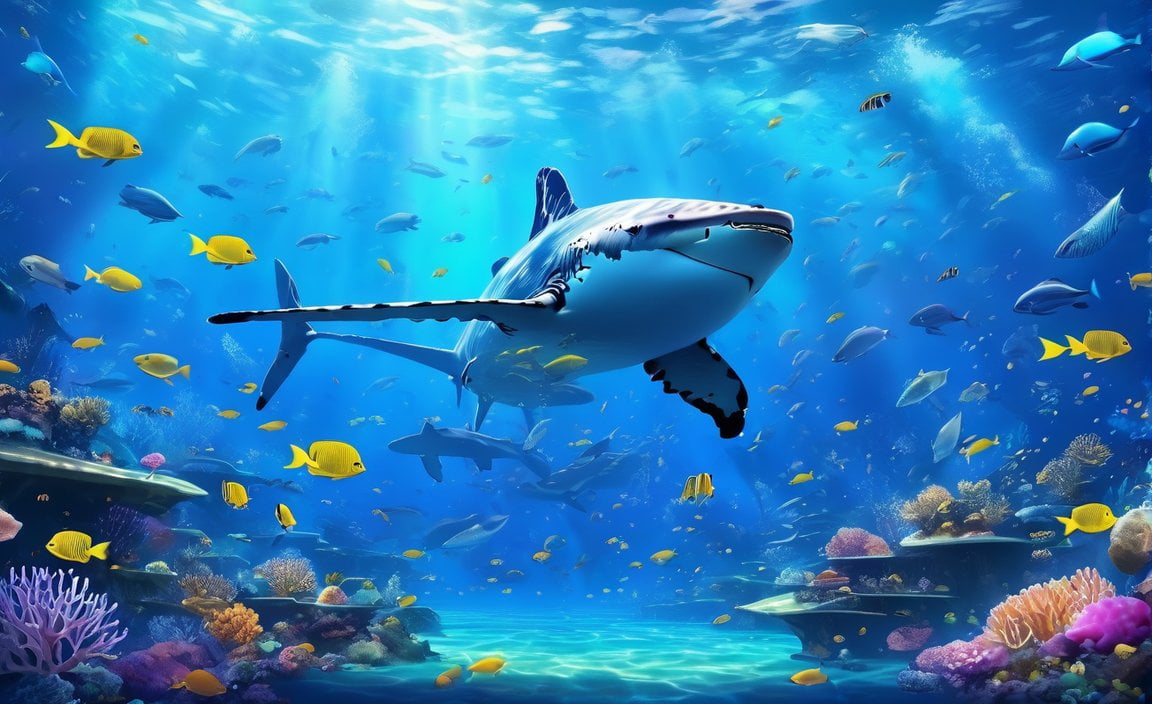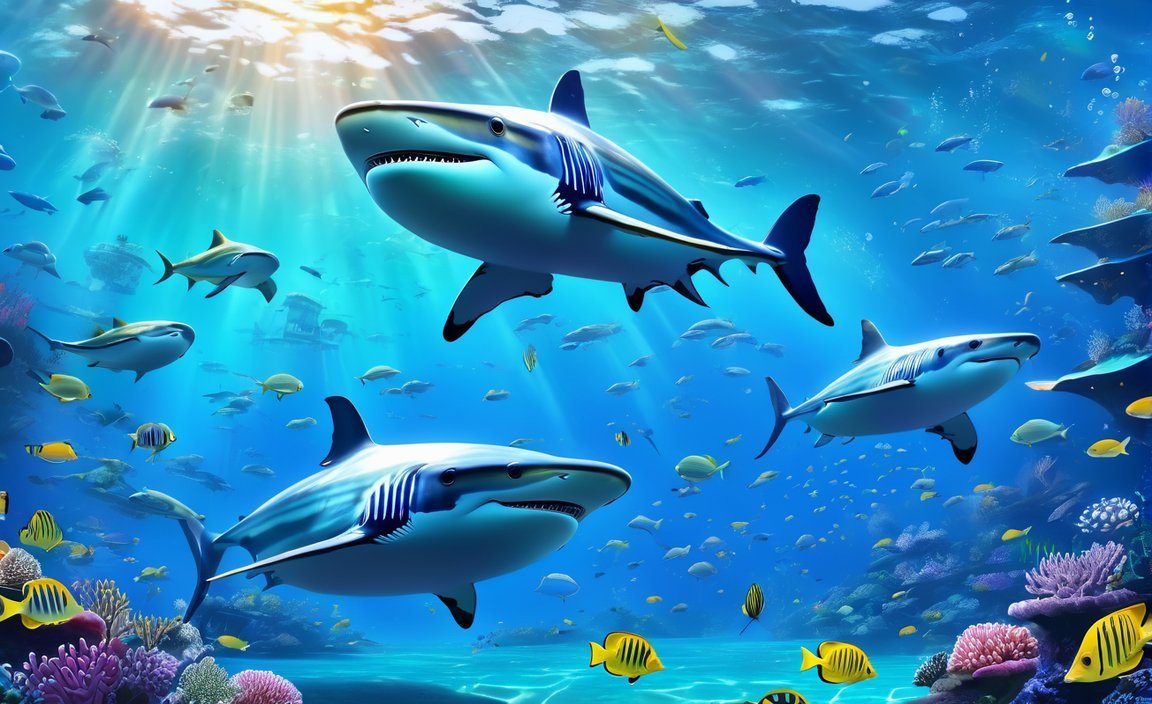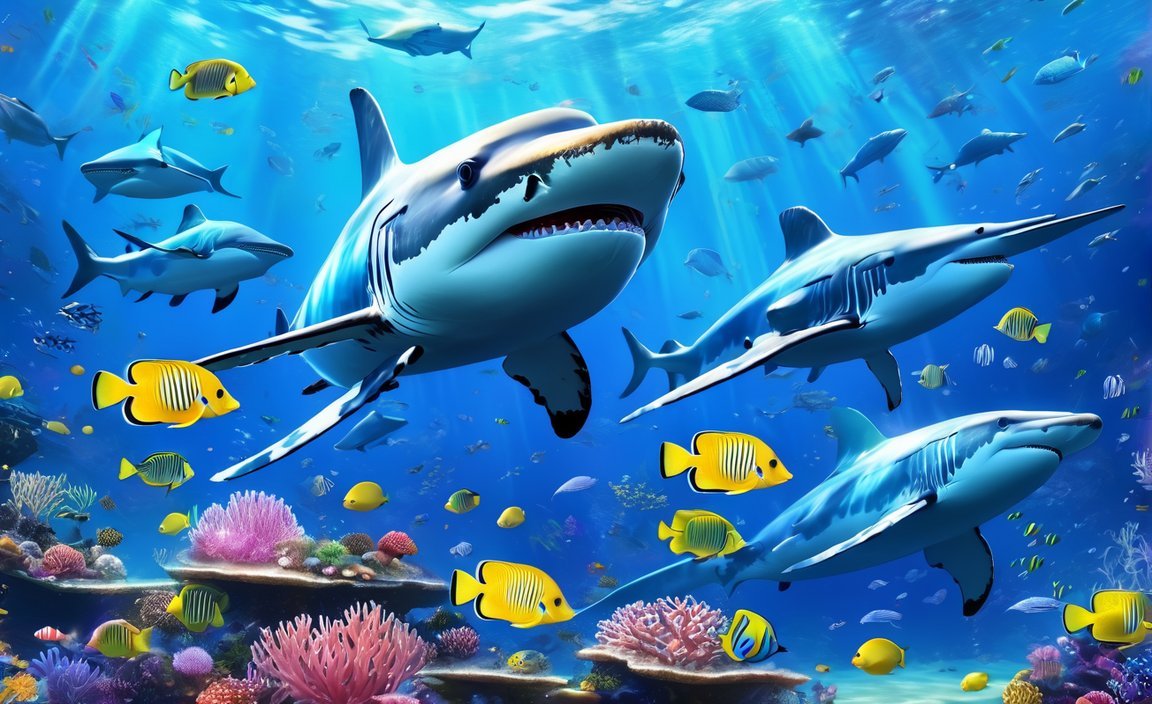Unleash your curiosity and get ready to explore the mind-blowing world of marine biology! Dive deep into the ocean’s secrets with us in this fun-filled article. From the fiery depths of hydrothermal vents to the glowing wonders of bioluminescent creatures, you’ll be in awe of the incredible diversity hidden beneath the waves. Join us as we uncover mind-boggling facts about marine life, from tiny microscopic wonders to massive whales. We’ll shed light on the challenges facing our oceans and how amazing marine biology research helps protect this vital part of our planet. Dive in with us and let the ocean’s wonders ignite your imagination!

5 Fun-Filled Facts About Marine Biology
Dive into the enchanting world of marine biology with these captivating facts that will make you feel like a true ocean adventurer!
1. Chatty Dolphins: The Name Game
Imagine dolphins gossiping about you, using special sounds like our human names! They actually have unique whistles that let them recognize each other, forming social groups just like us.
2. Immortal Jellyfish: A Time Warp in the Ocean
Turritopsis dohrnii, a jellyfish that can’t seem to grow old, is basically immortal. When it gets tired of being a jellyfish, it just transforms back into its baby stage and starts over. Who needs the fountain of youth when you can do it on your own?
3. Invertebrate Invasion: The Silent Majority
Don’t let the fish fool you! More than 95% of creatures in the ocean are actually invertebrates, like jellyfish, crabs, and shellfish. These guys are the backbone (or should we say backbone-less) of marine life, keeping the ecosystem in balance like marine superheroes.
4. Whale Farts: A Stinky Propulsion System
Whales may be gentle giants, but their farts pack a powerful punch. They release methane gas that shoots them through the water, and it’s like a secret superpower. But don’t get too close, because those farts can also impact ocean chemistry and even affect the climate.
5. Ocean Guardians: The Carbon Sponge
The ocean is like a giant carbon vault, soaking up about 30% of our carbon dioxide emissions. It’s all thanks to tiny creatures called phytoplankton, who love to gobble up carbon like it’s their favorite snack. This makes the ocean a crucial player in keeping our atmosphere clean and healthy.
So, there you have it! These fun facts are just a glimpse into the mind-boggling world of marine biology. From dolphins’ secret social lives to immortal jellyfish, from invertebrate wonders to whale farts and the ocean’s ability to fight climate change, there’s always something extraordinary to discover in the depths of our oceans.
Here are some fascinating facts about African bush elephants, and trust me, you definitely don’t want to miss them! Click here to uncover 5 fun facts about these magnificent creatures.
If you’re curious about aquatic animals and the wonders they hold, look no further. Dive into the world of marine life by discovering these 5 fun facts. Click here to unravel the secrets of aquatic animals.
Ever wondered what makes police dogs so incredible? Prepare to be amazed by these unbelievable facts. Click here to explore the exciting world of police dogs and uncover 5 fun facts.
Raccoons are notorious for being clever and mischievous, but did you know they have some incredibly interesting traits? Click here to discover 5 fun facts about raccoons that will leave you in awe.
How can marine biology research inform sustainable management practices for marine resources?
Marine biology is like a super-spy for our oceans, studying everything from tiny critters to massive whales. And it’s not just about learning cool facts. This research is the secret code to unraveling the mysteries of our seas and protecting their precious resources.
How marine biology helps us understand our watery world
1. It’s like a marine telenovela!
Marine biology research helps us see how different ocean creatures interact with each other. It’s like watching a marine soap opera, only the stars are fish, dolphins, and seaweed. By understanding these relationships, we can predict how changes in the ocean, like overfishing or pollution, will affect each species and the whole ecosystem.
2. Threat detective
Marine biology research also helps us sniff out threats to ocean life, like habitat destruction, pollution, and climate change. It’s like a detective investigation, gathering clues to find out what’s harming our marine friends. This info helps us create strategies to protect them and keep our oceans healthy.
3. Evaluation time!
Just like you need feedback on your homework, marine management strategies need to be evaluated too. Marine biology research checks the grades of these strategies by monitoring their impact on ocean ecosystems. This way, we can find what works best and adjust our plans as needed for a sustainable future.
4. Predicting the future of our oceans
Research helps us peer into the crystal ball of our oceans. By studying trends and patterns, scientists can predict what our seas might look like in the future under different management scenarios. This knowledge gives decision-makers a roadmap for steering our ocean resources towards a bright and sustainable path.
5. The conservation heroes
Marine biology research is like the superhero of ocean conservation. It provides vital data on the location, population, and health of marine species. Armed with this information, we can pinpoint critical habitats, create marine protected areas, and develop recovery plans to safeguard our precious ocean life.
In a nutshell:
Marine biology research is the key to unlocking the mysteries of our oceans and ensuring their long-term health. It helps us understand the complex relationships within marine ecosystems, identify and mitigate threats, and make informed decisions about how to manage our ocean resources sustainably. So, let’s give these marine science superheroes a big round of applause for keeping our oceans thriving for generations to come!

What are some interesting marine discoveries that have been made
The ocean holds endless wonders, and scientists are unearthing them one discovery at a time! Here are some intriguing finds that have us marveling at the ocean’s mysteries:
- Jellyfish that light up the dark: Down in the Mariana Trench, scientists stumbled upon a jellyfish that glows a vibrant green, casting a surreal light in the deepest corners of the ocean.
- Master of disguise: the shape-shifting octopus: Off the coast of Australia, researchers found an octopus with a remarkable ability to morph its shape to resemble fish, crabs, and other creatures in its environment.
- Venomous shark surprise: Brace yourself for a shark with a venomous twist! In New Zealand waters, scientists discovered a shark that packs a punch with a venomous spine on its back.
- Coral’s secret weapon against bleaching: Climate change is a threat to coral reefs, but not for a newly discovered species off the Great Barrier Reef. This coral has a remarkable resistance to bleaching, offering hope for the future of our underwater ecosystems.
- Spiked sea turtle: a unique defense mechanism: Meet a sea turtle unlike any other, found off the coast of Mexico with a shell bristling with spikes. This impressive armor provides extra protection against hungry predators.
These discoveries paint a colorful picture of the ocean’s diversity and resilience. As we dive deeper into its depths, we can expect even more mind-boggling wonders to emerge.
Hydrothermal Vent Ecosystems: Thriving in Nature’s Extreme Playground
Imagine a place where life blooms amidst the darkness of the ocean depths, where scorching heat and intense pressure reign supreme. This is the enigmatic realm of hydrothermal vents, undersea hot springs that unveil a fascinating chapter in our planet’s story.
Hydrothermal vents are like ethereal gardens beneath the waves, where hot, mineral-laden water gushes forth from fissures in the seafloor. This nutrient-rich liquid creates an oasis for life, fostering a diverse array of creatures adapted to survive in these extreme conditions.
Life on the Edge: Chemosynthesis
Unlike plants that harness sunlight for energy, vent organisms have evolved a unique way of sustaining themselves. They rely on a process called chemosynthesis, where they convert chemicals found in the vent fluids into their own fuel.
This remarkable adaptation has allowed life to flourish in the depths of the ocean, where sunlight fails to penetrate. Chemosynthesis powers the entire ecosystem, giving rise to a vibrant community of tube worms, mussels, and jellyfish.
Unveiling Earth’s Hidden Wonders
The discovery of hydrothermal vents in the 1970s was a groundbreaking moment in science. It shattered our preconceived notions about where life could thrive and demonstrated the incredible resilience and diversity of our planet’s inhabitants.
These undersea wonders remind us that life can emerge and endure in even the most extreme of environments, inspiring awe and wonder in the hearts of scientists and nature enthusiasts alike.
Table: Key Features of Hydrothermal Vent Ecosystems
| Feature | Description |
|---|---|
| Location | Seafloor along tectonic plate boundaries |
| Energy Source | Chemosynthesis (chemical conversion) |
| Water Temperature | Up to 400 degrees Celsius |
| Pressure | Intense, reaching thousands of atmospheres |
| Common Organisms | Giant tube worms, shimmering mussels, bizarre jellyfish |
Human Connection:
Hydrothermal vents hold not only scientific significance but also an emotional allure for humans. They evoke a sense of wonder and remind us of the hidden realms yet to be explored and appreciated.
FAQ
Q1: What lies beneath the ocean surface that can captivate and inspire?
A1: Beneath the ocean surface lies a captivating and awe-inspiring realm of marine life, from microscopic plankton to majestic whales. Marine biologists study this diverse array of species, their behaviors, and their interactions within the intricate marine ecosystems.
Q2: How can marine biology research inform sustainable management practices for marine resources?
A2: Marine biology research provides valuable insights for sustainable management of marine resources. By understanding the biology, ecology, and behavior of marine species, scientists can develop strategies to balance exploitation with conservation, ensuring the long-term health of marine ecosystems.
Q3: What are some interesting marine discoveries that have been made, such as hydrothermal vent ecosystems or bioluminescent species?
A3: Marine biology has produced many fascinating discoveries, including hydrothermal vent ecosystems, where life thrives in extreme conditions near underwater volcanoes. Bioluminescent species, which produce their own light, are another captivating example of the diversity and adaptability of marine life.
Q4: What are some of the diverse species that marine biologists study, from plankton to whales?
A4: Marine biologists study a wide range of species, from microscopic plankton that form the base of the marine food web to massive whales, the largest animals on Earth. This diversity includes fish, invertebrates, reptiles, birds, and mammals, each playing a vital role in the functioning of marine ecosystems.
Q5: What are some of the challenges and threats facing marine life, such as pollution, habitat destruction, and climate change?
A5: Marine life faces numerous challenges, including pollution, habitat destruction, and climate change. Human activities, such as industrial waste, plastic pollution, and coastal development, can harm marine organisms and disrupt marine ecosystems. Climate change poses significant threats, altering water temperatures, ocean chemistry, and weather patterns, affecting the survival and distribution of marine species.
- China II Review: Delicious Food & Speedy Service - April 17, 2025
- Understand Virginia’s Flag: History & Debate - April 17, 2025
- Explore Long Island’s Map: Unique Regions & Insights - April 17, 2025
















